
French postcard by Editions Art & Scene, no. CF 98, 1996. Photo: R. Cauchetier. Jean-Paul Belmondo and Jean Seberg in A bout de souffle/Breathless (Jean-Luc Godard, 1960).
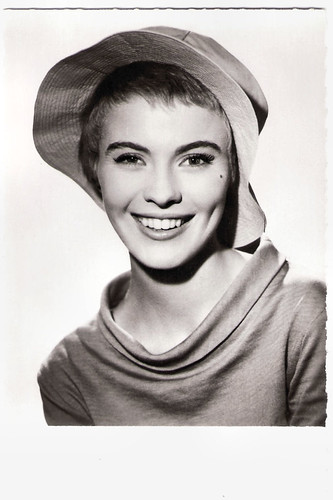
French postcard by Editions P.I., Paris, no. 900. Photo: Sam Lévin.

German postcard by WS-Druck, Wanne-Eickel, no. 334. Photo: Columbia / Filmpress Zürich.

Romanian postcard by Casa Filmului Acin.
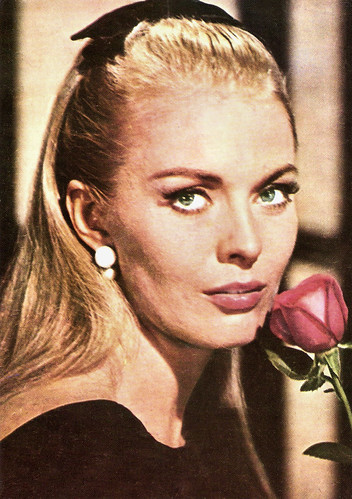 Romanian postcard by Casa Filmului Acin.
Romanian postcard by Casa Filmului Acin.Breathless
Jean Dorothy Seberg was born in Marshalltown, Iowa, in 1938. Her parents were Dorothy Arline Benson, a substitute teacher, and her husband Edward Waldemar Seberg, a pharmacist. Her father was of Swedish descent and her mother was of English and German ancestry. Jean had a sister Mary-Ann, a brother Kurt, and a brother David, who was killed in a car accident in 1968.
One month before her eighteenth birthday, Jean landed the title role in Otto Preminger's Saint Joan (1957) after a much-publicised contest involving some 18,000 hopefuls. Her name was entered by a neighbour.
Her only acting experience had been a single season of summer stock performances. Saint Joan, based on the George Bernard Shaw play, was a failure.
Preminger had promised her a second chance, and he cast Seberg in his next film Bonjour Tristesse (1958), which was filmed in France. That film’s only moderate success and the atrocious reviews for Seberg nearly ended her career, but her next film, the comedy The Mouse That Roared (Jack Arnold, 1959) starring Peter Sellers, was a success.
During the filming of Bonjour Tristesse, Seberg met a young French lawyer with film abitions, François Moreuil. He became her first husband, and Jean based herself in France.
There she got her breakthrough role as Patricia in Jean-Luc Godard's landmark feature, À bout de soufflé/Breathless (1960), opposite Jean-Paul Belmondo. The film became an international success and critics praised Seberg's performance.
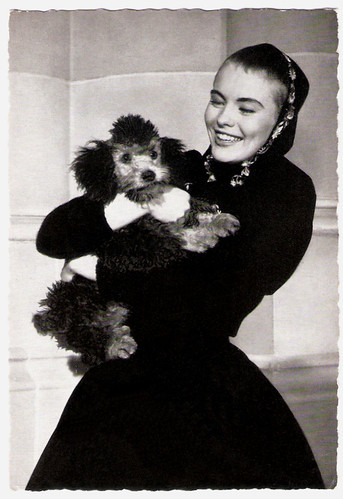
German postcard by WS-Druck, Wanne-Eickel, no. 195. Photo: dpa.
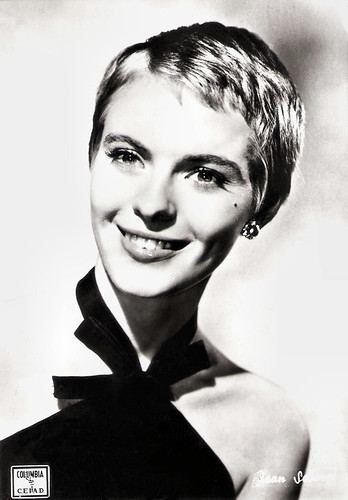
Italian postcard by Bromofoto, Milano, no. 1670. Photo: Columbia C.E.I.A.D.
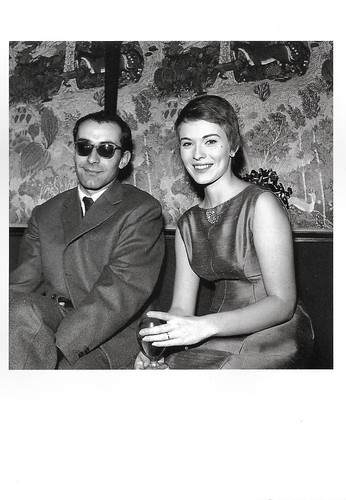
French postcard by Éditions Hazan, Paris, 1996. Photo: Raymond Depardon / Magnum. Caption: Jean Seberg and Jean-Luc Godard after the shooting of À bout de souffle.
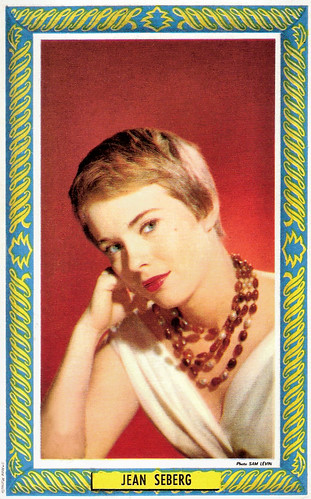
French postcard by St. Anne, Marseille. Photo: Sam Lévin.

French postcard by E.D.U.G., Paris, no. 140. Photo: Sam Lévin.
Suicide
Jean Seberg was now an icon of the Nouvelle Vague, the French New Wave. She appeared in several French films, including Philippe De Broca's comedy-drama L'amant de cinq jours/Five Day Lover (1961). In 1961, she took on the lead role in her husband François Moreuil's debut film, La recreation/Love Play, with Christian Marquand.
She gave a memorable performance as a schizophrenic in the title role of Robert Rossen's Lilith (1964) opposite Warren Beatty. In 1969, she appeared in the Western musical Paint Your Wagon (Joshua Logan, 1969), based on Lerner and Loewe's stage musical, and co-starring Lee Marvin and Clint Eastwood. Her singing voice was dubbed by Anita Gordon.
Seberg also starred in the disaster film Airport (George Seaton, 1970) opposite Burt Lancaster and Dean Martin. The film earned nearly $ 100 million and originated the 1970s disaster film genre.
In the late 1960s, Seberg became involved in anti-war politics. Her involvement with the Black Panther movement yielded the attention of the FBI, which spread the rumour about her pregnancy in 1970 being a child by Raymond Hewt, a Black Panther movement leader. Although her husband Romain Gary acknowledged her daughter Nina as his own, during her pregnancy she confessed that her baby was actually the product of an affair during a separation from Gary with a revolutionary student named Carlos Navarra. Her daughter Nina died as a result of complications sustained from Jean overdosing on sleeping pills during her pregnancy, on 25 August 1970, two days after her birth. On every subsequent anniversary of Nina's death, Jean attempted suicide.
Seberg remained active during the 1970s in European films. She appeared in the thriller L'attentat/The Assassination (Yves Boisset, 1972) with Jean-Louis Trintignant, Bianchi cavalli d'Agosto /White Horses of Summer (Raimondo Del Balzo, 1975) with Frederick Stafford, Le Grand Délire/The Big Delirium (Dennis Berry, 1975), with Pierre Blaise and Isabelle Huppert, and Die Wildente/The Wild Duck (Hans W. Geissendörfer, 1976), based on Henrik Ibsen's The Wild Duck.
In 1979, Jean Seberg was found dead. She had committed suicide by a barbiturate overdose in the back seat of a car in a Paris suburb. Her body wasn't found until 11 days later. Rumours flew that Jean's suicide was masterminded by the FBI but it was never proven. Buried in the Montparnasse cemetery in Paris, her funeral was attended by such notables as Jean-Paul Sartre and Simone de Beauvoir.
Seberg was married four times. Her husbands were François Moreuil (1958-1960), the author Romain Gary (1962-1970), TV director Dennis Berry (1972-1978), and Algerian playboy Ahmed Hasni (1979–her death). With Gary, she had a son, Alexandre Diego Gary, born in 1962. In December 1980, Romain Gary committed suicide. Gary's suicide note, which was addressed to his publisher, indicated that he had not killed himself over the loss of Seberg but over the fact that he felt he could no longer produce literary works.

French postcard in the Collection Cinéma by Editions Art & Scène, Paris, no. CF 29, 1995. Photo: Raymond Cauchetier, 1959. Jean-Paul Belmondo and Jean Seberg in A bout de souffle/Breathless (Jean-Luc Godard, 1960).

French postcard by Éditions Art & Scène, no. CF 107, 1996. Photo: R. Cauchetier. Jean Seberg in À bout de souffle/Breathless (Jean-Luc Godard, 1960).

East-German postcard by VEB Progress Film-Vertrieb, Berlin, no. 2442, 1965. Jean-Paul Belmondo and Jean Seberg in Échappement libre/Backfire (Jean Becker, 1964).
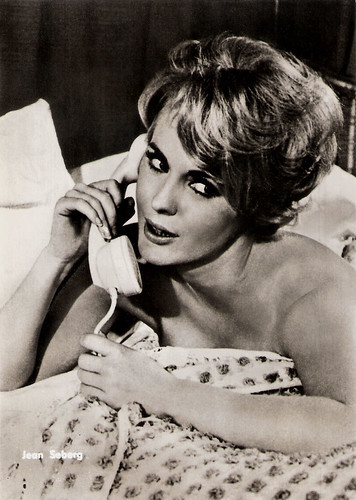
East-German postcard by VEB Progress Film-Vertrieb, Berlin, no. 155/71, 1971. Photo: publicity still for Un milliard dans un billard/Diamond Cue (Nicolas Gessner, 1965).
Trailer for Bonjour Tristesse (1958). Source: rosen88kavalier (YouTube).
Trailer for À bout de soufflé/Breathless (1960). Source: TheEnlightenGroup (YouTube).
Trailer for Philippe De Broca's L'amant de cinq jours/Five Day Lover (1961). Source: Cohen Film Collection (YouTube).
Sources: Wikipedia and IMDb.
This post was last updated on 18 December 2021.
3 comments:
Herald Tribune! Herald Tribune!
What an incredible set of postcards. I don't know how you found them all--your history concerning this truly gifted actress, is fascinating. Someday, perhaps, you will write a book.
Hi, Paul--thank you for that wonderful memory you shared. How perfectly romantic and sweet--your dear one must be a remarkable lady. Have a beautiful weekend--what's left of it! :D
Post a Comment